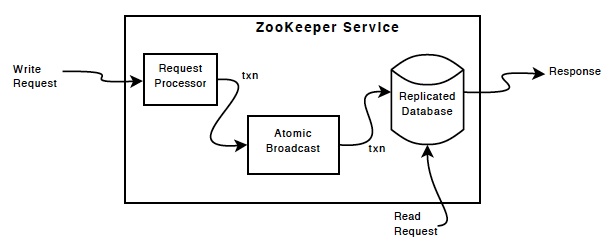This section introduces memory architecture, both hardware and software, including processor and operating system specifics.
Hardware
Main Memory
The common type of main memory in use today is dynamic random-access memory (DRAM). This is a type of volatile memory—its contents are lost when power is lost. DRAM provides high-density storage, as each bit is implemented using only two logical components: a capacitor and a transistor. The capacitor requires a periodic refresh to maintain charge.
Latency
The access time of main memory can be measured as the column address strobe (CAS) latency: the time between sending a memory module the desired address (column) and when the data is available to be read.
Main Memory Architecture
Uniform Memory Access

Non-uniform memory access

Buses
Main memory may be accessed in one of the following ways:
- Shared system bus: Single or multiprocessor, via a shared system bus, a memory bridge controller, and finally a memory bus.
- Direct: Single processor with directly attached memory via a memory bus.
- Interconnect: Multiprocessor, each with directly attached memory via a memory bus, and processors connected via a CPU interconnect.
Multichannel
System architectures may support the use of multiple memory buses in parallel, to improve bandwidth. Common multiples are dual-, triple-, and quad-channel.
CPU Caches
Processors typically include on-chip hardware caches to improve memory access performance. The caches may include the following levels, of decreasing speed and increasing size:
- Level 1: Usually split into a separate instruction cache and data cache
- Level 2: A cache for both instructions and data
- Level 3: Another larger level of cache
Depending on the processor, Level 1 is typically referenced by virtual memory addresses, and Level 2 onward by physical memory addresses.
MMU
The MMU (memory management unit) is responsible for virtual-to-physical address translations. These are performed per page, and offsets within a page are mapped directly.

TLB
The MMU uses a TLB (translation lookaside buffer) as the first level of address translation cache, followed by the page tables in main memory. The TLB may be divided into separate caches for instruction and data pages.
Software
Freeing Memory
When the available memory on the system becomes low, there are various methods that the kernel can use to free up memory, adding it to the free list of pages.

- Free list: A list of pages that are unused (also called idle memory) and available for immediate allocation. This is usually implemented as multiple free page lists, one for each locality group (NUMA).
- Page cache: The file system cache. A tunable parameter called swappiness sets the degree to which the system should favor freeing memory from the page cache instead of swapping.
- Swapping: This is paging by the page-out daemon, kswapd, which finds not recently used pages to add to the free list, including application memory. These are paged out, which may involve writing to either a file system-based swap file or a swap device. Naturally, this is available only if a swap file or device has been configured.
- Reaping: When a low-memory threshold is crossed, kernel modules and the kernel slab allocator can be instructed to immediately free any memory that can easily be freed. This is also known as shrinking.
- OOM killer: The out-of-memory killer will free memory by finding and killing a sacrificial process, found using select_bad_process() and then killed by calling oom_kill_process(). This may be logged in the system log (/var/log/messages) as an “Out of memory: Kill process” message.
Free List(s)

Reaping
Reaping mostly involves freeing memory from the kernel slab allocator caches. These caches contain unused memory in slab-size chunks, ready for reuse. Reaping returns this memory to the system for page allocations.
Page Scanning
Freeing memory by paging is managed by the kernel page-out daemon. When available main memory in the free list drops below a threshold, the page-out daemon begins page scanning. Page scanning occurs only when needed. A normally balanced system may not page scan very often and may do so only in short bursts.
kswapd scans the inactive list first, and then the active list, if needed.

Process Virtual Address Space
Managed by both hardware and software, the process virtual address space is a range of virtual pages that are mapped to physical pages as needed. The addresses are split into areas called segments for storing the thread stacks, process executable, libraries, and heap.

- Executable text: Contains the executable CPU instructions for the process. This is mapped from the text segment of the binary program on the file system. It is read-only with the execute permission.
- Executable data: Contains initialized variables mapped from the data segment of the binary program. This has read/write permissions so that the variables can be modified while the program is running. It also has a private flag so that modifications are not flushed to disk.
- Heap: This is the working memory for the program and is anonymous memory (no file system location). It grows as needed and is allocated via malloc(3).
- Stack: Stacks of the running threads, mapped read/write.
Allocators

Slab
The kernel slab allocator manages caches of objects of a specific size, allowing them to be recycled quickly without the overhead of page allocation. This is especially effective for kernel allocations, which are frequently for fixed-size structs.
Slub
The Linux kernel SLUB allocator is based on the slab allocator and is designed to address various concerns, especially regarding the complexity of the slab allocator. Improvements include the removal of object queues, and per-CPU caches—leaving NUMA optimization to the page allocator
glibc
Its behavior depends on the allocation request size. Small allocations are served from bins of memory, containing units of a similar size, which can be coalesced using a buddy-like algorithm. Larger allocations can use a tree lookup to find space efficiently. Very large allocations switch to using mmap. The net result is a high-performing allocator that benefits from multiple allocation policies.





.png)

.png)
.png)
.png)